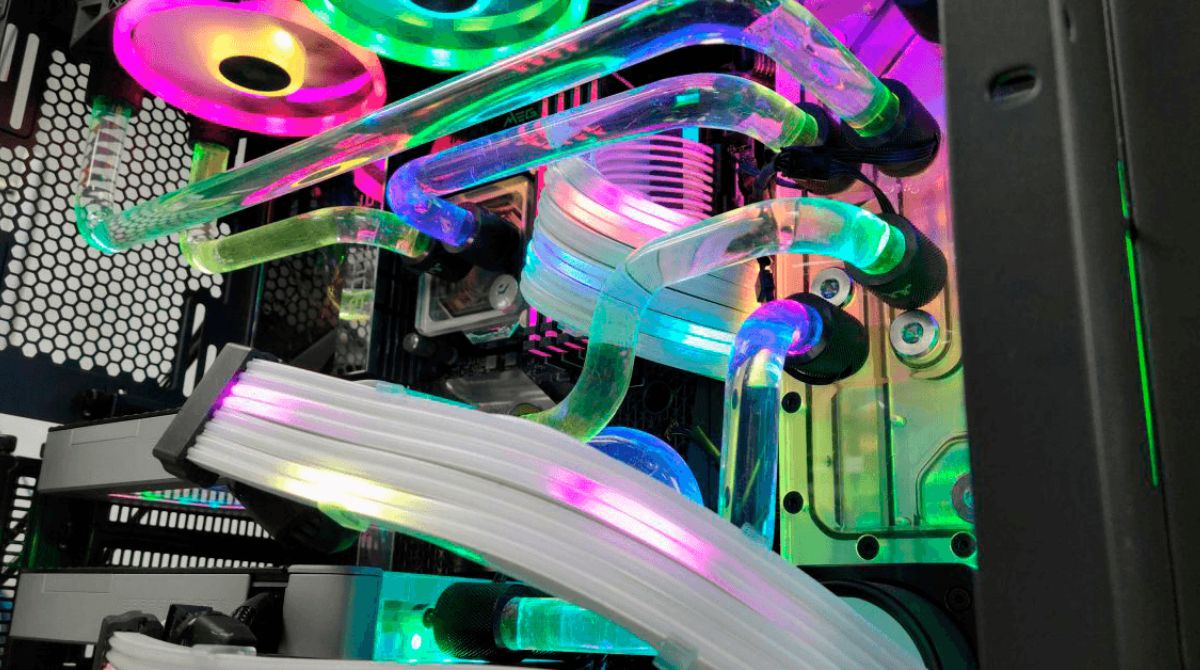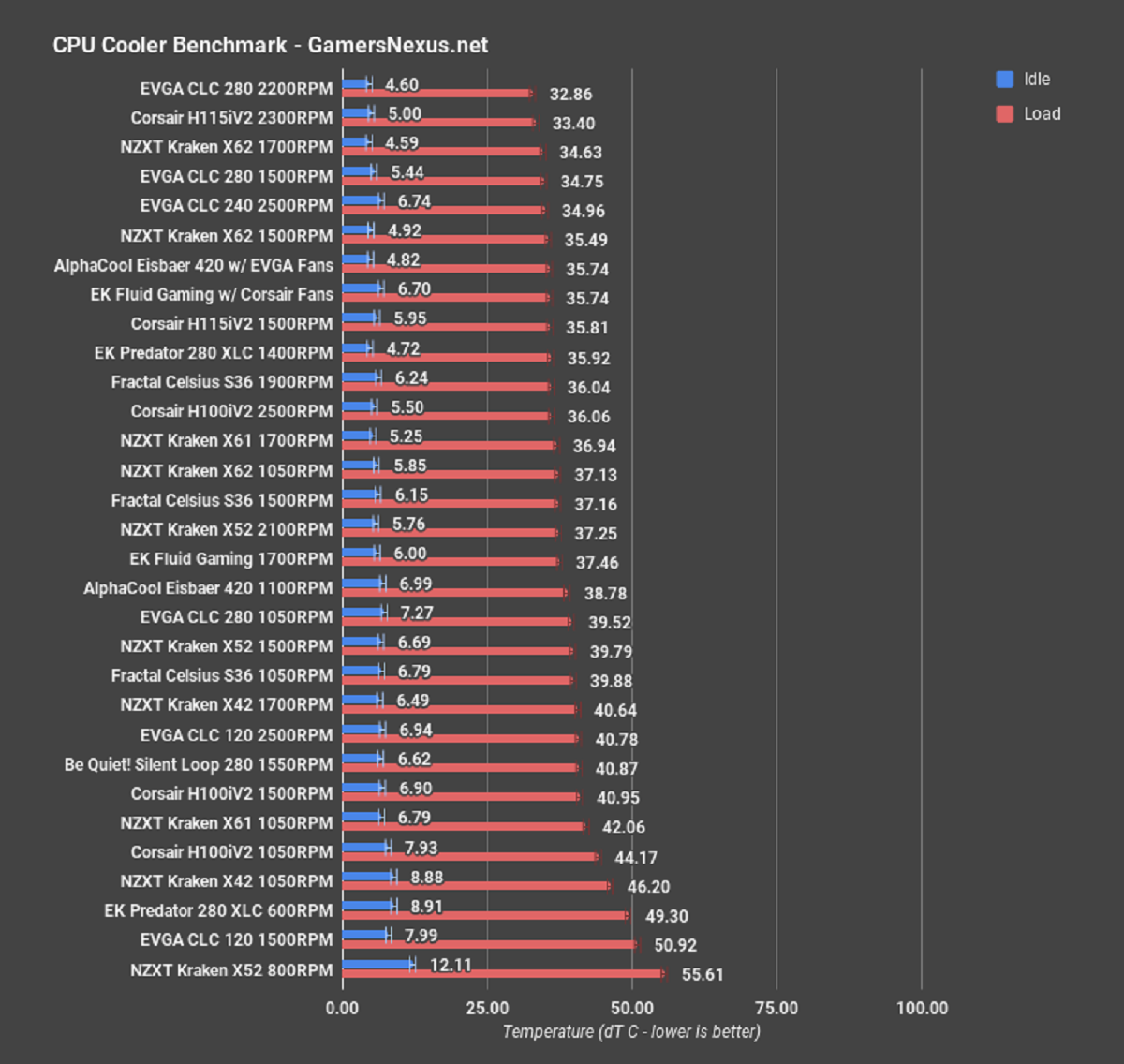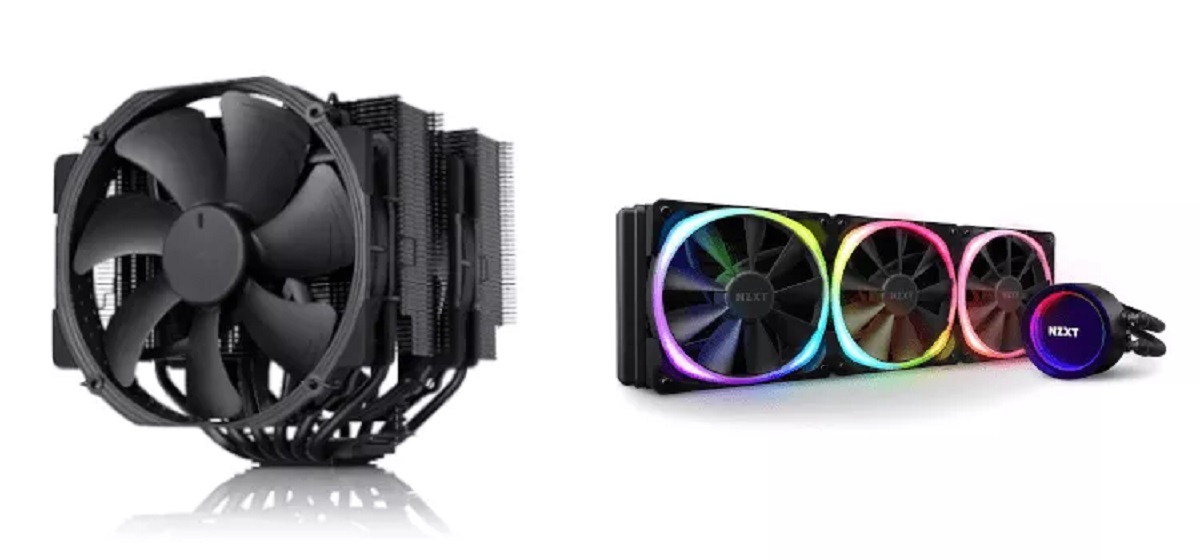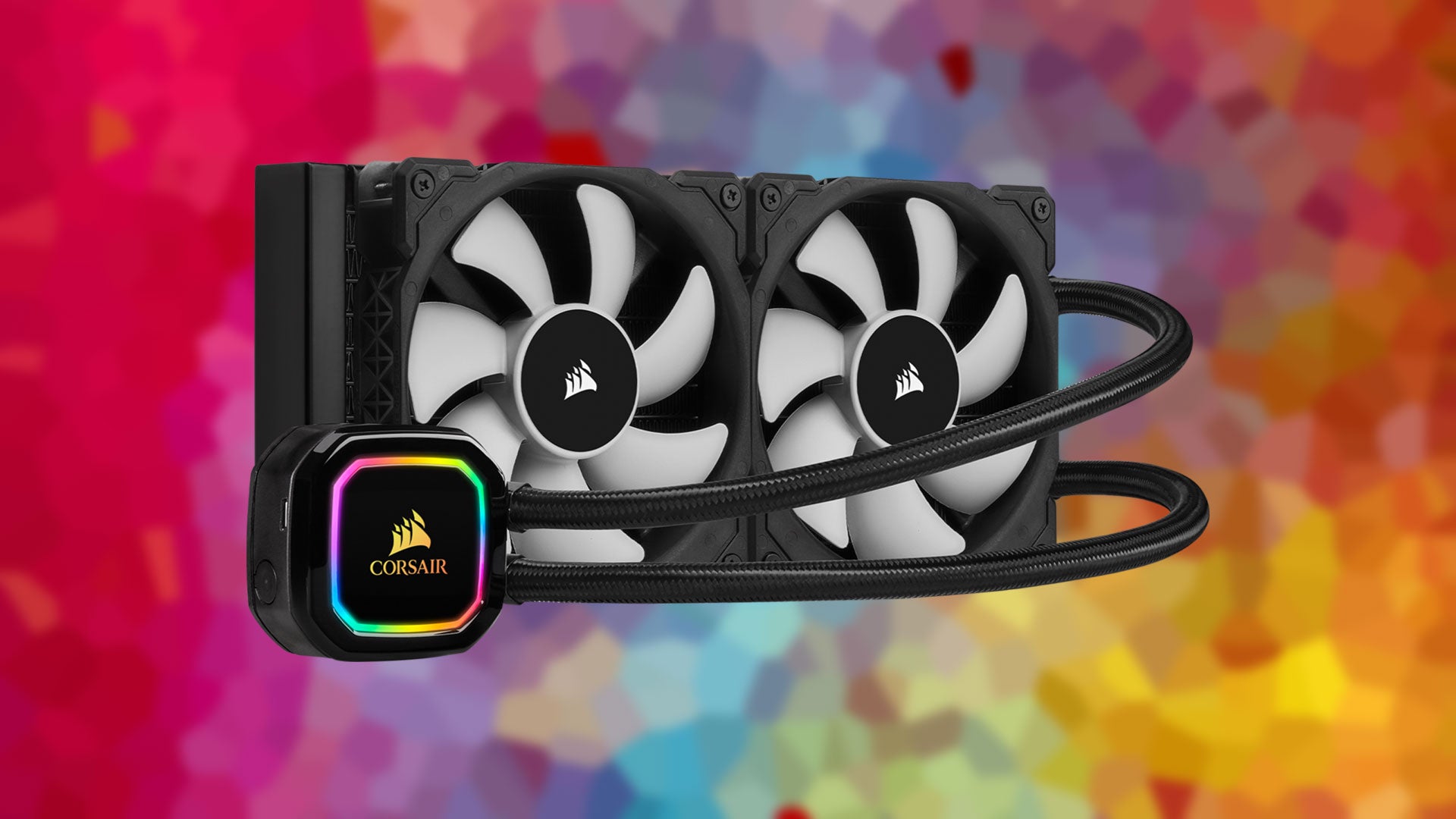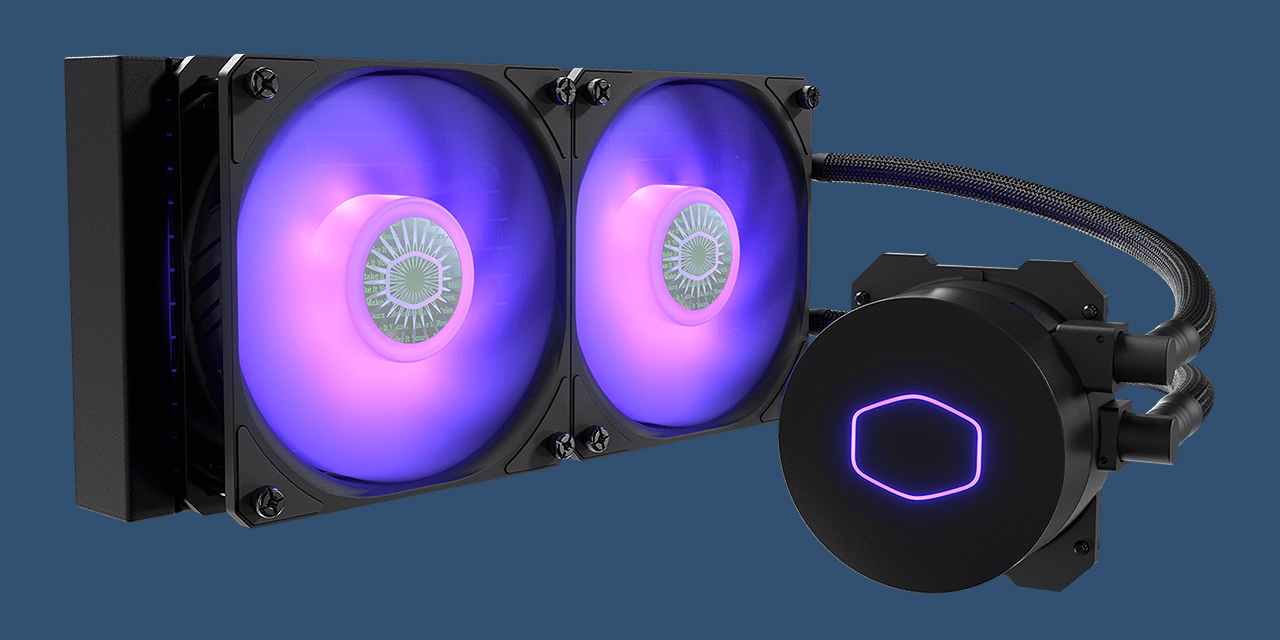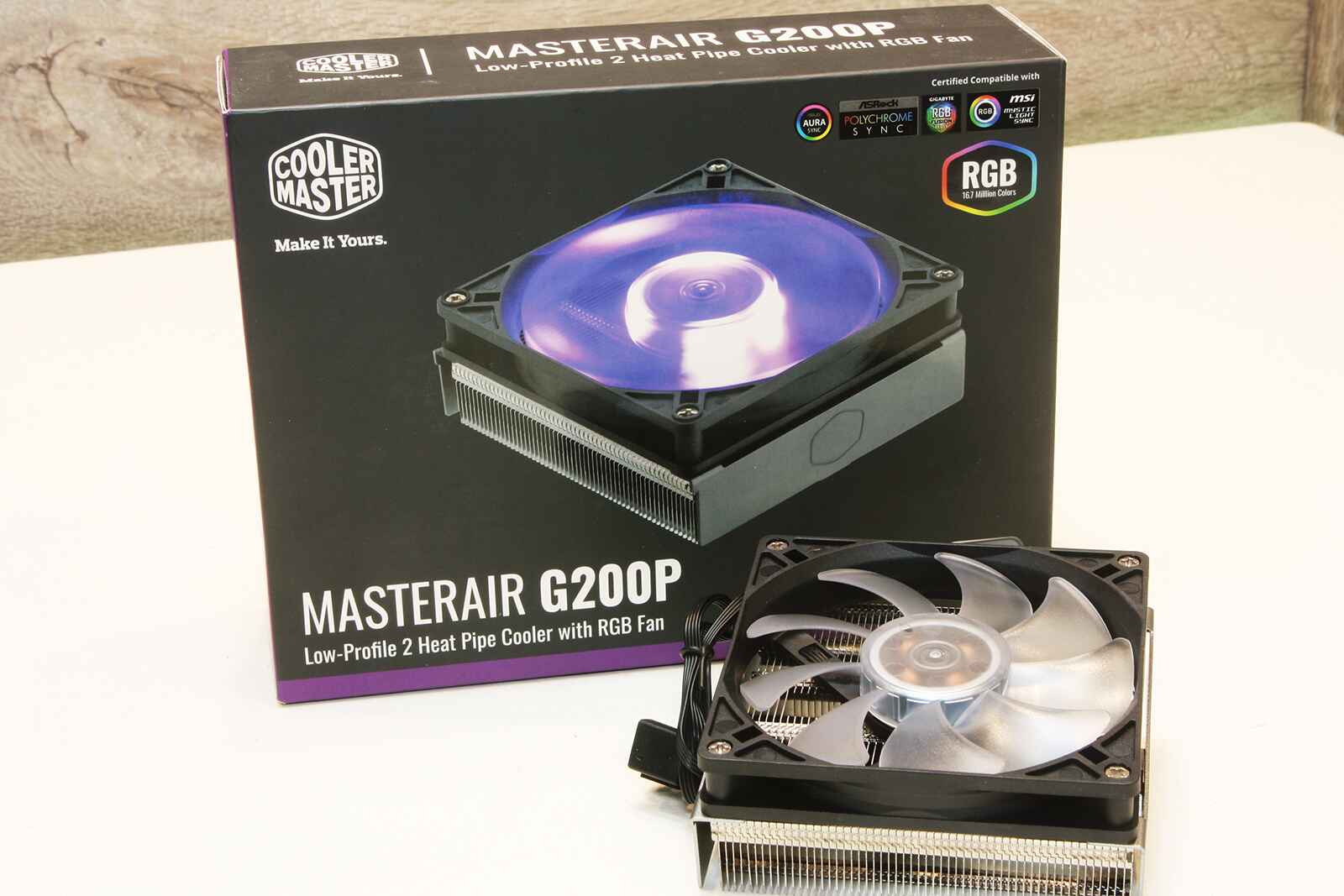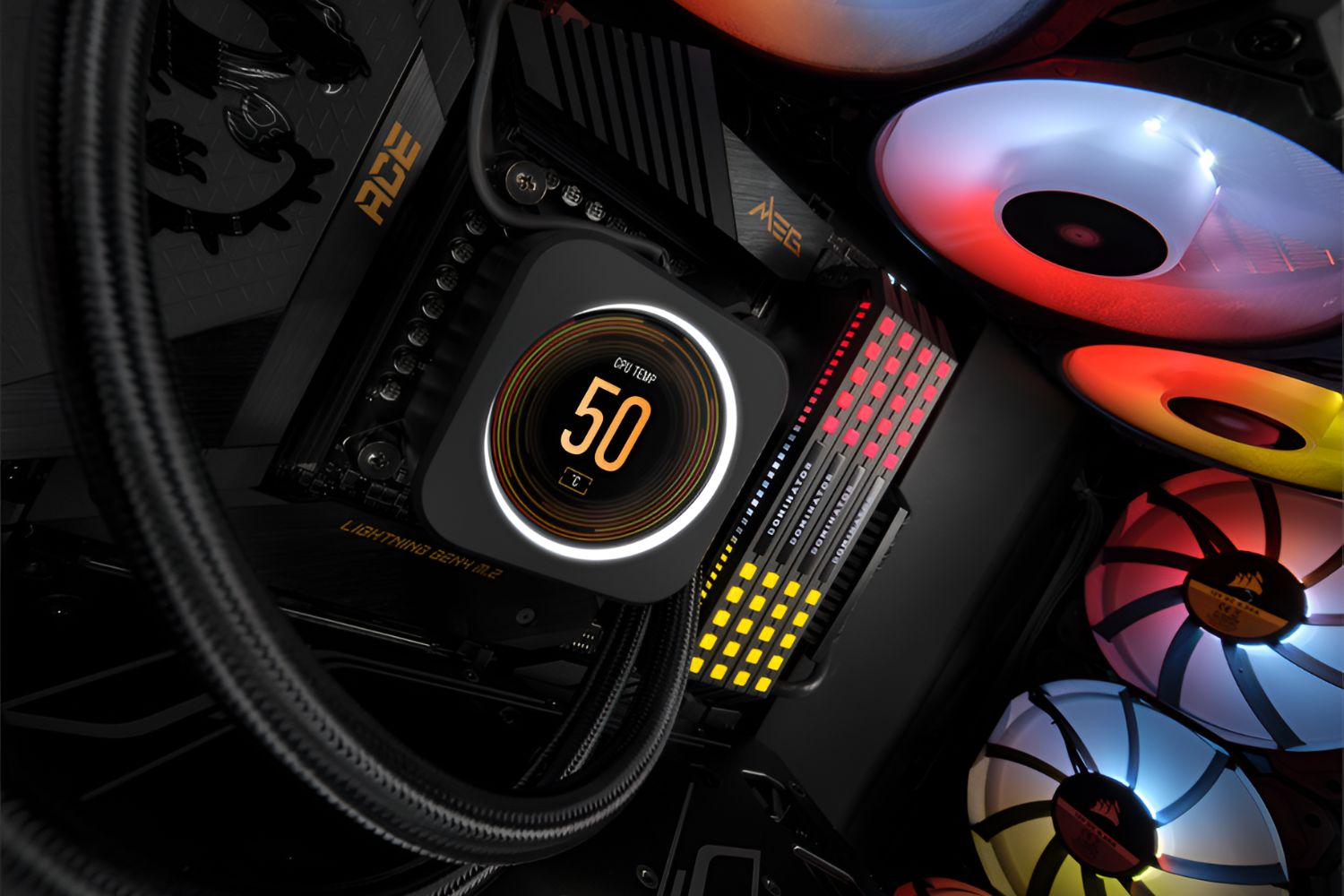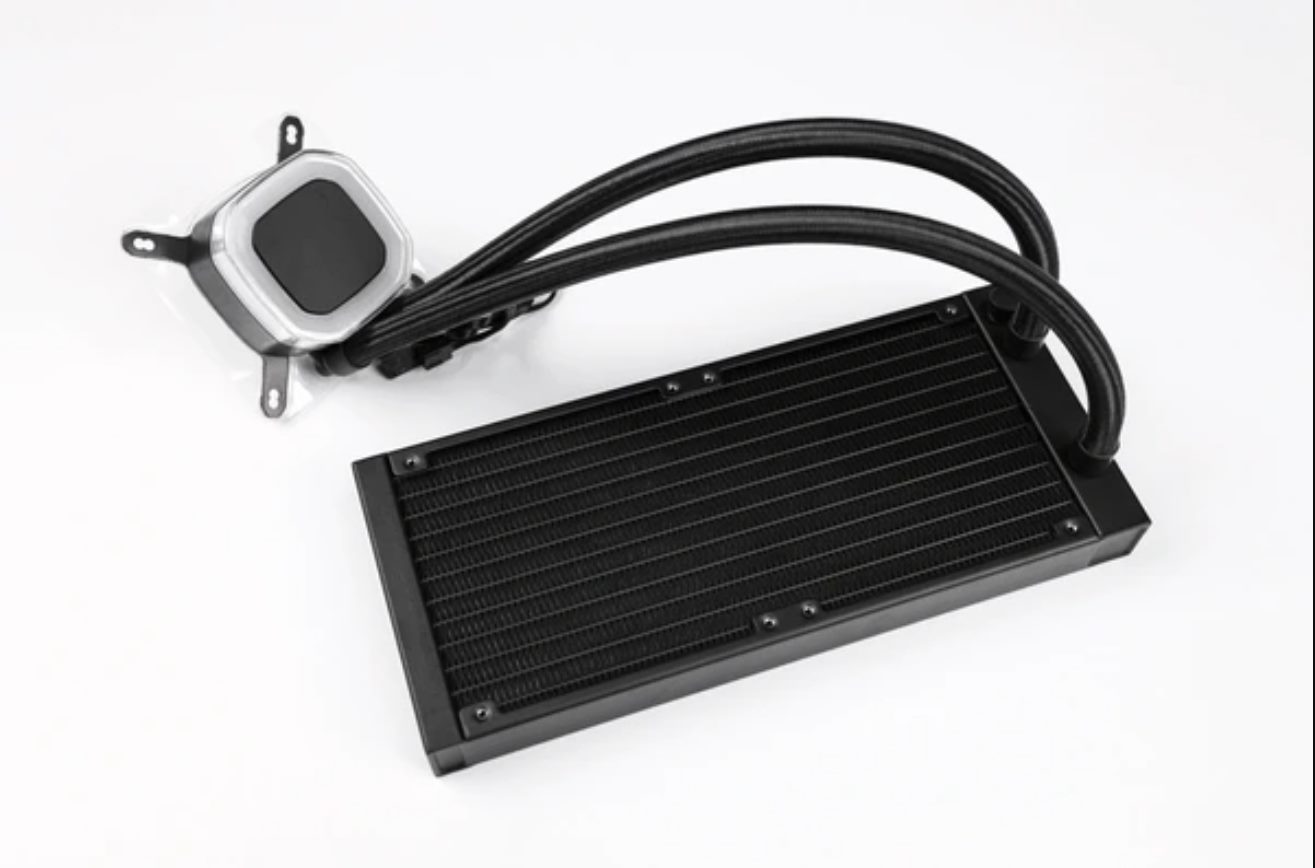Introduction
Welcome to the world of liquid CPU coolers! When it comes to keeping your processor running at optimal temperatures, there’s no better solution than a liquid cooling system. Whether you’re a hardcore gamer, a creative professional, or simply a computer enthusiast, investing in a high-quality liquid CPU cooler can significantly enhance your system’s performance and longevity.
In this article, we will explore the key factors to consider when selecting a liquid CPU cooler. From cooling performance to compatibility, design to noise level, we will cover all the essential aspects that will help you make an informed decision and find the perfect cooler for your needs.
Before delving into the details, let’s briefly explain what a liquid CPU cooler is. Unlike traditional air coolers that rely on bulky heatsinks and fans, liquid CPU coolers utilize a closed-loop system consisting of a pump, radiator, tubes, and a water block. The pump circulates coolant through the system, transferring heat from the CPU to the radiator where it is dissipated by fans. This efficient cooling method not only provides excellent heat dissipation but also helps in maintaining lower CPU temperatures.
Now that we have an overview of liquid CPU coolers, let’s dive into the factors you should consider when choosing one.
Cooling Performance
The primary purpose of a liquid CPU cooler is to effectively cool down your processor and prevent it from overheating. Therefore, the cooling performance of a cooler should be your top consideration. Look for coolers that provide efficient heat dissipation and keep your CPU operating within safe temperature ranges.
Cooling performance is typically measured in terms of the maximum heat dissipation capacity or thermal dissipation power (TDP) supported by the cooler. The higher the TDP rating, the more capable the cooler is in handling high-performance CPUs that generate significant heat.
Another important factor to consider for cooling performance is the number and size of the radiator’s fins. More fins allow for a larger surface area, which improves heat dissipation. Additionally, thicker radiators can dissipate heat more effectively. However, keep in mind that larger radiators may require more space in your case.
The efficiency of the fans also plays a crucial role in cooling performance. Look for coolers that come with high-quality fans capable of delivering strong airflow while operating quietly. Some coolers even offer customizable fan speed settings to strike a balance between cooling and noise level based on your specific needs.
Overall, when it comes to cooling performance, it’s essential to consider the TDP rating, radiator size, and fan quality to ensure that your CPU stays cool even under heavy workloads or intense gaming sessions.
Radiator Size
The size of the radiator in a liquid CPU cooler is an important consideration as it directly affects cooling performance. The radiator acts as a heat exchanger, dissipating the heat collected from the CPU. The larger the radiator, the more surface area it has to dissipate heat, resulting in better cooling efficiency.
When selecting a liquid CPU cooler, you’ll come across various radiator sizes, typically measured in millimeters (mm) for width, height, and thickness. The most common radiator sizes are 120mm, 240mm, 360mm, and even larger variants like 480mm or 560mm.
The choice of radiator size depends on your specific requirements and the available space in your case. Smaller radiators, such as 120mm or 240mm, are suitable for compact cases or those with limited clearance. These radiators are ideal for moderate cooling needs and can handle mid-range CPUs effectively.
For those who demand higher cooling performance, larger radiators like 360mm or 480mm provide a greater cooling capacity. They are well-suited for high-end systems with overclocked CPUs or for users who engage in intense gaming or CPU-intensive tasks for prolonged periods.
However, it’s important to note that larger radiators may require larger cases or specific mounting locations. Before purchasing a liquid CPU cooler, make sure to check the dimensions of your case and verify if it can accommodate the radiator size you desire.
In summary, radiator size directly influences the cooling capacity of your liquid CPU cooler. Choose a size that matches your cooling needs and is compatible with your case’s dimensions to ensure optimal cooling performance for your CPU.
Fan Configuration
In a liquid CPU cooler, fans play a crucial role in dissipating heat from the radiator and ensuring efficient cooling. The fan configuration refers to the number and arrangement of fans in the cooler setup.
The most commonly used fan configurations in liquid CPU coolers are single fan, dual fan, and triple fan setups. A single fan configuration is the most basic and compact option, suitable for moderate cooling requirements. It is commonly found in smaller radiators.
Dual fan configurations offer improved cooling performance compared to single fan setups. With two fans working in tandem, they can generate higher airflow and provide better heat dissipation. Dual fan setups are commonly used in 240mm or 280mm radiators and are suitable for most gaming and everyday computing needs.
For users who demand superior cooling performance, triple fan configurations are the way to go. These setups feature three fans working together to maximize airflow and heat dissipation. Typically found in 360mm or larger radiators, triple fan configurations are ideal for high-performance systems or overclocked CPUs where temperatures need to be kept exceptionally low.
In addition to the number of fans, the fan speed and noise level should also be taken into account. Look for liquid CPU coolers that offer adjustable fan speed settings or come with fans that have a wide RPM range. This allows you to balance cooling performance and noise levels to suit your preferences.
Furthermore, consider the fan airflow design, such as static pressure or high airflow fans. Static pressure fans are excellent for pushing air through the radiator fins, while high airflow fans are ideal for providing a steady flow of air across the entire system.
Ultimately, the fan configuration you choose depends on your cooling needs, available space, and noise tolerance. Make sure to consider these aspects to find the optimal fan setup for your liquid CPU cooler.
Pump Design
The pump is a crucial component of a liquid CPU cooler as it circulates the coolant through the system, ensuring efficient heat transfer from the CPU to the radiator. When considering a liquid CPU cooler, it’s important to evaluate the pump design and its impact on overall performance.
One of the key factors to consider in pump design is the pump type. There are two common types: AIO (All-in-One) pumps and custom loop pumps.
AIO pumps are pre-assembled units that come with a closed-loop system. These pumps are generally more compact and easier to install, making them a popular choice for beginners or users who prefer a hassle-free setup. AIO pumps are typically designed to fit a specific CPU socket, ensuring compatibility, and they often come with built-in RGB lighting for aesthetic appeal.
On the other hand, custom loop pumps offer more flexibility and customization options. These pumps are designed for enthusiasts who want to create a fully customized cooling system. Custom loop pumps are larger and more powerful than AIO pumps, allowing for more efficient heat dissipation and the ability to include additional components, such as GPU blocks or additional radiators, in the loop.
Another aspect of pump design to consider is the noise level. Some pumps can produce audible noise, which may be a concern for users who prioritize a quiet system. Look for pumps that offer noise dampening features, such as rubber gaskets or insulated covers, to minimize noise generation.
Additionally, pay attention to the pump’s flow rate, measured in liters per hour (LPH) or gallons per hour (GPH). A higher flow rate ensures better heat transfer and faster coolant circulation, resulting in improved cooling efficiency.
Lastly, durability and reliability are important factors to consider when evaluating pump design. Look for pumps from reputable manufacturers known for producing high-quality components. Reading customer reviews and checking the manufacturer’s warranty can provide insights into the pump’s longevity and performance.
In summary, when choosing a liquid CPU cooler, consider the pump design, including the pump type, noise level, flow rate, durability, and reliability. Finding a pump that meets your specific requirements will contribute to the overall performance and longevity of your liquid cooling system.
Compatibility with CPU
Ensuring compatibility between the liquid CPU cooler and your CPU is essential for a successful cooling solution. Different CPU sockets have unique mounting mechanisms, and not all coolers are compatible with every socket. It’s important to verify that the cooler you choose is specifically designed to work with your CPU’s socket type.
Most liquid CPU coolers support a variety of socket types, such as Intel’s LGA or AMD’s AM4 sockets. However, it’s always recommended to check the manufacturer’s specifications or compatibility list to ensure compatibility with your specific CPU.
Pay attention to the cooler’s mounting mechanism as well. Some coolers use a backplate mounting system, which requires access to the back of the motherboard for installation. On the other hand, some coolers may use a different mounting mechanism that doesn’t require access to the back of the motherboard. Make sure the mounting mechanism aligns with your CPU socket and your case’s layout.
Another aspect to consider is the clearance between the cooler and other components on your motherboard. Verify that there is enough space around the CPU socket to accommodate the cooler’s water block and any additional components like VRM heatsinks or RAM modules.
In addition to socket compatibility, consider the TDP (thermal design power) rating of your CPU. The TDP indicates the maximum amount of heat the CPU generates under normal operation. Ensure that the liquid CPU cooler you choose can handle the TDP of your CPU. It’s always recommended to choose a cooler with a higher TDP rating than your CPU to provide sufficient cooling capacity.
Lastly, keep in mind that some liquid CPU coolers may have height restrictions due to the case’s clearance. If you have a small form factor case or limited space, make sure the cooler’s height doesn’t exceed the maximum clearance specified by your case manufacturer.
In summary, before purchasing a liquid CPU cooler, ensure it is compatible with your CPU’s socket type, mounting mechanism, and TDP rating. Checking the compatibility list and considering the clearance in your case will help you find the perfect cooler that provides optimal cooling performance for your CPU.
Noise Level
When it comes to selecting a liquid CPU cooler, noise level is an important factor to consider, especially for those who value a quiet computing experience. The noise generated by the cooler’s fans and pump can affect the overall ambiance of your workspace and your own comfort during prolonged usage.
The noise level of a liquid CPU cooler is generally measured in decibels (dB). Lower dB ratings indicate quieter operation. Most manufacturers provide noise level specifications for their coolers, allowing you to compare different models and choose the one that suits your preferences.
One of the main contributors to noise in a liquid CPU cooler is the fan. Look for coolers that come with fans specifically designed for reduced noise, such as those with low acoustic noise ratings or fans equipped with noise dampening features like rubber gaskets or anti-vibration pads. Additionally, fans with a wider RPM range can offer more control over noise levels by allowing you to adjust the fan speed to strike a balance between cooling performance and noise reduction.
The pump noise can also be a consideration. Some liquid CPU coolers feature pumps equipped with noise-reducing technologies like insulated covers or rubberized components, which help minimize vibration and dampen operational noise.
It’s worth noting that while noise reduction is important, it shouldn’t be the sole determining factor in your decision-making process. It’s essential to strike a balance between noise level and cooling performance. Opting for an ultra-quiet cooler may result in compromised cooling efficiency, potentially leading to higher CPU temperatures.
Consider your specific usage scenario when evaluating noise levels. For users who engage in demanding tasks such as gaming or video editing, where the CPU is under heavy load for extended periods, cooling performance may take precedence over noise reduction. On the other hand, if you primarily use your computer for everyday tasks and require a quiet environment, focusing on noise reduction features becomes more important.
In summary, when selecting a liquid CPU cooler, pay attention to the noise level specifications and look for coolers with noise-reducing features. But remember to strike a balance between noise reduction and cooling performance, considering your specific usage requirements and preferences.
Software Control
Software control is an increasingly important feature in modern liquid CPU coolers as it allows for enhanced customization, monitoring, and control of the cooling system. With the help of dedicated software, users can fine-tune various aspects of their cooler’s performance to optimize cooling efficiency and noise levels.
One of the key benefits of software control is the ability to adjust fan speeds and pump speeds. This allows users to optimize the cooling performance based on their specific needs. For example, during intense gaming sessions or CPU-intensive tasks, users can increase the fan and pump speeds to maximize heat dissipation. On the other hand, during idle or less demanding usage, users can reduce fan and pump speeds to minimize noise and power consumption.
Software control also enables users to monitor the temperature of the CPU and coolant in real-time. This provides valuable insights into the cooling effectiveness and allows users to make adjustments if necessary. Additionally, some software also provides alerts or notifications in case of any abnormal temperature spikes or system issues, allowing for timely troubleshooting.
In addition to fan and pump control, some software solutions offer advanced features like RGB lighting customization. Users can personalize the lighting effects and colors of their liquid CPU cooler, adding a visual element to their system’s aesthetics.
Furthermore, software control may offer additional functionalities such as firmware updates for the cooler, allowing users to keep their cooler up to date with the latest performance improvements and bug fixes.
It’s worth noting that software control availability and functionality may vary depending on the manufacturer and specific cooler model. Before making a purchase, it’s advisable to research and ensure that the liquid CPU cooler you choose provides software control compatible with your operating system and offers the desired features.
Overall, software control is a valuable feature that enhances the user experience and allows for customization and monitoring of the liquid CPU cooler. Consider this feature when selecting a cooler to take full advantage of the possibilities it offers for optimizing cooling performance, noise levels, and aesthetics.
Water Block Design
The water block is an essential component of a liquid CPU cooler, as it is responsible for transferring heat from the CPU to the liquid coolant. The design of the water block plays a crucial role in the overall cooling performance and compatibility of the cooler.
One aspect of water block design to consider is the base plate material. Most commonly, water blocks are made of copper or a combination of copper and other materials. Copper provides excellent thermal conductivity, allowing for efficient heat transfer from the CPU. Some water blocks also feature a nickel-plated surface, which improves corrosion resistance and adds a sleek appearance.
The surface area of the water block also affects cooling performance. Look for water blocks with large and finned surface areas, as they provide better contact with the CPU and enable more effective heat dissipation.
Compatibility with CPU sockets is another key consideration. Ensure that the water block is specifically designed to fit and make proper contact with your CPU’s socket. Different sockets require different mounting mechanisms and water block designs, so it’s important to verify compatibility before purchasing.
The water block design should also take into account the orientation and placement of the fittings. Ideally, the fittings should be positioned in a way that allows easy and convenient connection to the tubing without interfering with other components or obstructing airflow within the case.
In addition to functionality, aesthetics may also play a role in your decision. Some water blocks feature RGB lighting or customizable elements that can add to the visual appeal of your system. Consider these aesthetic features if you want to create a visually striking PC build.
It’s worth noting that some liquid CPU coolers come with pre-filled and sealed water blocks, which eliminate the need for refilling or maintenance. These all-in-one (AIO) coolers offer a simplified installation process and are popular among users who want a hassle-free cooling solution.
In summary, when selecting a liquid CPU cooler, pay attention to the water block design, including the base plate material, surface area, compatibility with CPU sockets, and fittings placement. Finding a well-designed water block will ensure efficient heat transfer and compatibility with your system, contributing to optimal cooling performance.
Build Quality and Durability
Build quality and durability are important factors to consider when investing in a liquid CPU cooler. A well-built and durable cooler ensures long-lasting performance and reliability, providing peace of mind for the user.
One aspect of build quality to look for is the construction of the cooler itself. High-quality materials, such as sturdy metals and durable plastics, contribute to the overall robustness of the cooler. A solidly built cooler is less prone to damage during installation or transportation and is more likely to withstand the test of time.
Pay attention to the quality of the fittings, screws, and brackets included with the cooler. These components should be well-made and secure, ensuring proper installation and a stable mounting on the CPU and case.
Additionally, consider the quality of the tubing used in the cooler. Flexible and durable tubing helps in easy installation and prevents any leakage or kinking of the tubes, which could compromise the performance and safety of the cooling system.
Reputable manufacturers often provide warranty periods for their coolers, which is another indication of the build quality and confidence in their products. Check the warranty policy of the cooler you are considering to ensure that you are covered in case of any manufacturing defects or malfunctions.
It’s also worthwhile to read customer reviews and product ratings to gain insights into the long-term performance and durability of the cooler. Feedback from other users can provide valuable information about any potential issues or weaknesses in the build quality or overall durability of the cooler.
Furthermore, consider the manufacturer’s reputation and track record. Established brands with a history of producing high-quality cooling solutions are more likely to provide reliable and durable products.
In summary, investing in a liquid CPU cooler with good build quality and durability is essential for long-term performance and peace of mind. Look for coolers made with high-quality materials, secure fittings and brackets, durable tubing, and reputable manufacturer warranties. Reading customer reviews and considering the brand’s reputation can also provide insights into the cooler’s long-term performance and reliability.
Maintenance and Upkeep
Maintenance and upkeep are important considerations when it comes to liquid CPU coolers. Regular maintenance ensures the optimal performance and longevity of the cooler, while minimizing the risk of potential issues such as leaks or reduced cooling efficiency.
One crucial maintenance task is keeping the radiator clean and free from dust or debris. Over time, dust can accumulate on the radiator’s fins, hindering airflow and reducing cooling performance. Periodically cleaning the radiator with compressed air or a soft brush can help maintain optimal cooling efficiency.
It is also important to check the coolant level and quality. Some liquid CPU coolers come with pre-filled and sealed coolant, which eliminates the need for refilling. However, if your cooler requires maintenance of the coolant, it is essential to follow the manufacturer’s instructions. Maintaining the correct coolant level and ensuring the coolant is free from contaminants can help prevent corrosion and maintain consistent cooling performance.
Regularly inspecting the tubing for any signs of wear, cracks, or leaks is also important. Damaged tubing should be replaced promptly to prevent any coolant leakage that could damage the components of your system. Additionally, check for any loose fittings or screws and ensure they are properly tightened to maintain a secure and leak-free cooling system.
Updating the firmware or software of your liquid CPU cooler, if available, is another maintenance task to consider. Manufacturers often release firmware or software updates to improve performance or fix any issues. Keeping your cooler updated with the latest releases can help ensure optimal functionality.
Lastly, periodic monitoring of temperatures and system performance is recommended. Keep an eye on CPU temperatures using monitoring software to identify any significant changes that could indicate a potential issue with the cooler. Monitoring also allows you to observe the effectiveness of the cooling system and make adjustments if needed.
Remember to consult the manufacturer’s instructions and guidelines for specific maintenance recommendations for your liquid CPU cooler. Each cooler may have its own unique maintenance requirements, and following these guidelines will help maximize its performance and lifespan.
In summary, regular maintenance and upkeep are necessary for the longevity and optimal performance of your liquid CPU cooler. Tasks such as cleaning the radiator, monitoring coolant levels, inspecting tubing, tightening fittings, updating firmware or software, and monitoring temperatures are essential. Following the manufacturer’s guidelines and instructions will ensure the proper functioning of your cooler and minimize any potential issues.
Price and Value for Money
Price is a crucial factor to consider when selecting a liquid CPU cooler, but it shouldn’t be the sole determining factor. While it’s important to stay within your budget, it’s equally important to assess the value for money offered by the cooler.
When comparing prices, consider the overall features, performance, and quality of the cooler. A higher-priced cooler may offer advanced features, better cooling performance, and superior build quality, which could justify the higher cost. On the other hand, a lower-priced cooler may still provide adequate cooling performance for your needs if you are on a tighter budget.
Pay attention to the warranty offered by the manufacturer. A longer warranty period often indicates the manufacturer’s confidence in the cooler’s quality and durability. Investing in a cooler with a longer warranty can provide added peace of mind.
Consider your specific requirements and usage scenarios when assessing value for money. If you are a casual user who doesn’t engage in heavy overclocking or CPU-intensive tasks, a mid-range liquid CPU cooler may provide sufficient cooling capability at a reasonable price. However, if you are a demanding user who engages in overclocking or CPU-intensive tasks, investing in a higher-end cooler with better cooling performance and durability may offer better value over the long term.
Research and read customer reviews to gain insights into the performance and experiences of other users with the cooler you are considering. Real-world feedback can help you evaluate the value and reliability of the cooler, providing valuable information that may not be apparent from the specifications alone.
It’s also important to take into account the cost of potential upgrades or additional components. For example, if you plan to expand your cooling system in the future by adding more radiators or components to the loop, investing in a cooler with expansion options may save you money in the long run.
In summary, while price is an important consideration, it’s crucial to assess the overall value for money offered by the liquid CPU cooler. Consider the features, performance, build quality, warranty, and real-world feedback from other users. Evaluating value for money based on your specific requirements and usage scenarios will help you make an informed decision and find the right cooler within your budget.
Conclusion
Choosing the right liquid CPU cooler can significantly impact the performance, longevity, and noise levels of your computer system. By considering various factors, you can make an informed decision and find a cooler that suits your needs and preferences.
Start by assessing the cooling performance of the cooler, considering factors such as TDP rating, radiator size, and fan configuration. These aspects determine how effectively the cooler can dissipate heat and maintain optimal CPU temperatures.
Ensure compatibility with your CPU socket and consider the noise level of the cooler. Look for coolers with adjustable fan speeds and noise reduction features to strike a balance between cooling performance and a quiet computing experience.
Evaluate the pump design, considering the type, noise level, flow rate, and durability. A well-designed pump ensures efficient coolant circulation and reliable performance.
Consider the build quality and durability of the cooler, as robust construction and reliable components contribute to its longevity and overall performance. Look for coolers made with high-quality materials and backed by reputable manufacturers.
Think about the maintenance and upkeep required for the cooler. Opt for coolers that require minimal maintenance, such as pre-filled and sealed units. Regular cleaning, monitoring, and firmware/software updates will ensure optimal performance and minimize any potential issues.
Finally, consider the price and value for money. Assess the overall features, performance, quality, warranty, and user experiences to determine if a cooler offers good value within your budget.
By considering these factors and finding the right balance for your specific needs, you can select a liquid CPU cooler that provides efficient cooling, reliable performance, and a pleasant computing experience for years to come.







